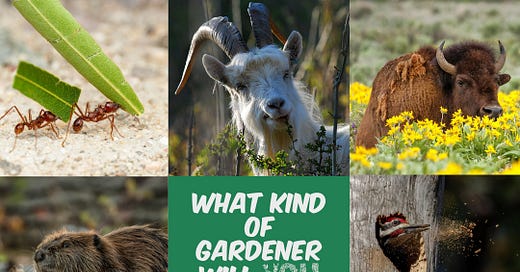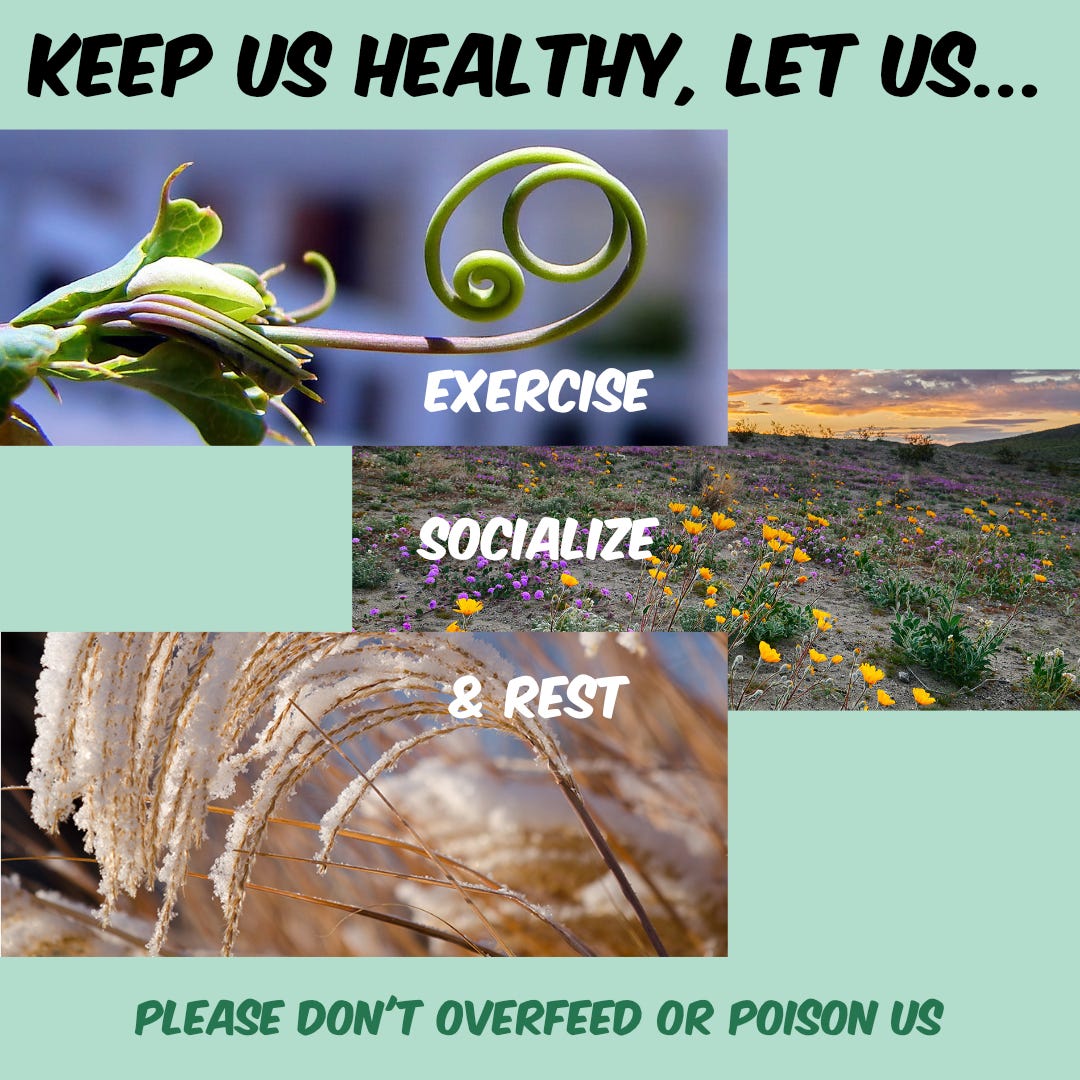Inspiration
During a recent coffee house meet up with a new friend, Stephanie Aitken (a landscape consultant with Urban Systems, Kelowna), something occurred to me. That although both Stephanie and I work in different areas of the province, each with unique plant life, climates and history of place, we have a lot in common.
As it turns out one of the challenges that we both feel, is how to encourage good maintenance practices in naturalistic civic landscapes.
As pieces of our conversation sat percolating in the far reaches of my brain, something occurred to me. Could we harness a clever bit of marketing to make our thoughts on stewardship more engaging?
So, here goes. Today, I want to expand a wee bit on that idea. And, at the same time reach out to all of you, for your feedback and thoughts on this too.
The Maintenance Problem
Designing and building modern urban green spaces isn’t easy. We work hard to consider each area individually. Gathering as much information as possible and utilizing it to inform everything from considered use and inclusion through design, to building beautiful yet functional ecosystems. Then we do our best to efficiently plan, construct and introduce them to users. But none of that really matters for long, if there's no plan or people in place to keep it healthy through the years.
And I know at this point that I'm not the only plant nerd yelling, "education! maintenance plans and signage!"
But, as you may have guessed, not every one nerds out on this stuff (a true shocker, right?).
A mockup image that could be linked to more in depth content?
Civic Diversity
One of the most unique things about a city, is that they have a wide spectrum of stakeholders connected to them. Including city crews, several levels of management, councils and mayor, plus community groups, members of the public and of course the flora and fauna itself. And of course, all of the humans involved each have varying levels of interest, skill and education in relation to horticulture.
I spent a dozen years myself as a city parks employee and it's something that requires some true blue sky thinking. Just as an example, I once counted 9 other humans within the cities organizational chart alone, that all had input on a single project.
Marketing Trends
So what occurred to me was, can we harness some basic marketing skills to craft a solution?
Perhaps we could build a series of images that tap into some common language trends, as well as a few shared moral desires? And, start to shift not only how our stakeholders see our parks and greenspaces, but also how we should want to care for them. Perhaps these small moments could even be linked to longer manuals and educational materials via QR codes?
Potential to inspire a new way of viewing our civic gardens and greenspaces?
Desire & Delivery Systems
Some great advice that I always come back to for marketing campaigns is, "know your audience and appeal to them in a way that they prefer". So, here are a few bits and pieces that may help us.
When you start to dig into our current collective desires, several trends appear. Many of which dove tail rather nicely into the ethos of naturalistic parkscapes.
Here are just a few:
prefer to invest in lasting quality (even if it costs more initially)
consume less & more wisely
greater trust in small-scale entities that are transparent about their ecological impact (no green washing)
the quest for stability by an apprehensive generation caught between eco-anxiety and the fear of another pandemic in the future
a growing awareness of our environmental footprint
prefer their grandparents gardens rather than their parents (organic, permaculture methods)
want greater seasonal change within gardens and new categories, (foraging, ephemeral displays & diversity laboratories)
greater interest in rewilding urban centers
looking for natural and minimalist designs
use of eco-friendly natural materials & sustainable practices
And now, a few trends in how we enjoy learning. Including:
spending more time in the digital world (our phones are often our primary source of reading)
switching between smaller more digestible pieces of information and longer academic content (as time permits)
a propensity to seek out several authentic and authoritative sources (rather than just one)
looking for new and more immersive experiences
a desire to challenge conventional knowledge
seeking a holistic view of the world
blurring the line between serious and light-hearted content
accessing a variety of content (videos, images, tutorials & apps)
One more possible image?
The Challenge
The final question is, can we use all of this research to build new and improved educational content that will help inspire all of our stakeholders, no matter what their background entails, to better care for our eco-friendly urban parks?
What do you think?
Should it be a series of images, on posters and signage that then connect to apps, articles, videos and longer form manuals? What might grab your attention, get you excited and ultimately inspire you to get involved?
Sara-Jane @ Virens Studio
Virens is a Canadian, west coast based studio that offers eco landscape and planting design, consultation and garden writing.







This reminded me of a recent advert campaign run while it was London fashion week called the earthworm project where ads that looked like they were marketing clothing was highlighting elements of spring nature. Hope this link works which explains more and includes the adverts https://www.linkedin.com/posts/amv-bbdo_welcome-to-earthworm-projects-a-campaign-activity-7292980065930268673-NGIo
What if there’s a way to use something like Geocaching for your marketing idea? Each city park space can have something hidden, like a certain native plant or insect to “collect” which then leads you to the next park. That would make it fun for kids/families.